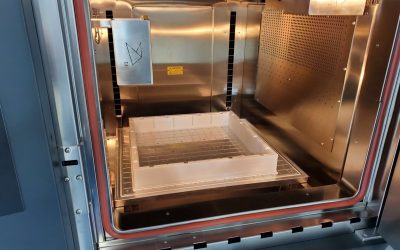3D printing with liquids; tiny loudspeakers; 3D printing grants. 3D printing with liquids Martin Luther University Halle-Wittenberg (MLU) has developed a way to combine both materials and liquids in 3D printing applications . Researchers from MLU have developed liquid‐filled capsules using 3D printing technology. This in turn enables new medical agents to be incorporated into pharmaceutical products. It also allows liquids to be integrated into materials. 3D printing uses a specialized printer to develop three-dimensional objects from a CAD model. In 3D printing, materials are deposited layer-by-layer to create various products. This method uses materials, which are liquefied through heat and become solid after printing, according to researchers. “If the finished product is to contain liquid components, these are usually added afterwards,” according to researchers at MLU. “This is time-consuming and costly.” In response, researchers from MLU combined common 3D printing processes with traditional printing methods like inkjet or laser printers. For this, liquids are added drop by drop at the desired location. This takes place during the extrusion of the basic material. “Using a two‐print‐head system (fused deposition modeling extruder and a liquid inkjet print head), micro‐sized capsules are manufactured in sizes ranging from 100 to 800µm. The […]
The Intersection of Drones and Additive Manufacturing
SHAPEWAYS.COM 2 This eBook is for designers engaged at the intermediate and advanced 3D printing levels, offering...




























0 Comments